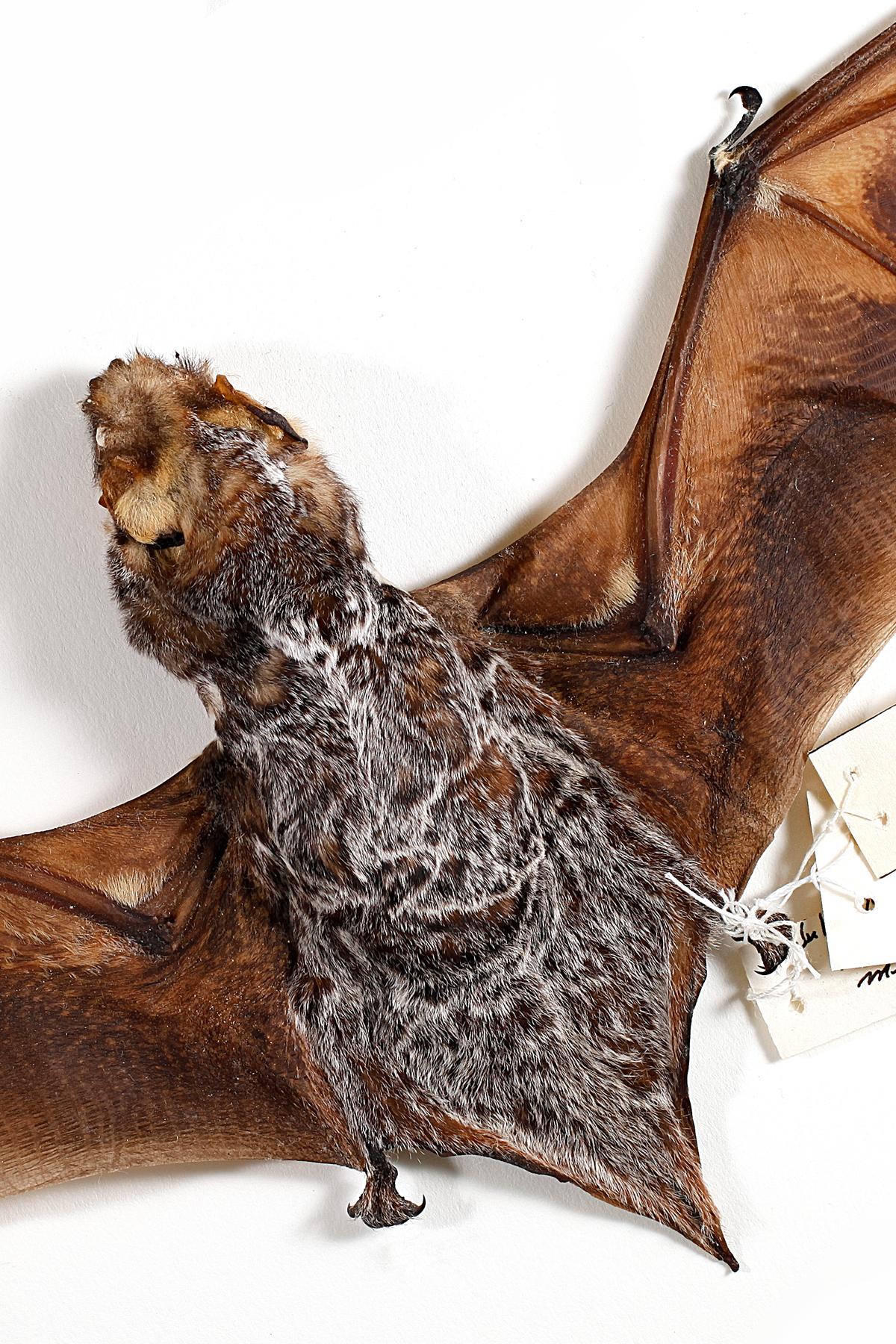The CU Museum is closed we will be opening early in the spring semester.
During this time, collection visits will be available by appointment and other special access requests will be considered on a case-by-case basis.
Please email cumuseum@colorado.edu for more information.
Bats
Bats are often portrayed as ugly, mysterious, or evil creatures. These representations speak more about our fears than fact-based knowledge about these mammals. Bats make important contributions to the natural world. Even more, bats can help us to understand the evolution of language.
Learning language development from bats
- Vocalizations were intended for specific individuals, rather than broadcast, and contain vast information.
- These vocalizations offer information about the identity of the emitter, the context of the call, the behavioral response to the call, and the call’s addressee.
- Information on the identity of the addressee could be similar to humans using different intonation toward different listeners while using the same words.
These scientists propose that in studies tracking language evolution, understanding everyday chitchat among nonhuman animals may be helpful. And bats talk to each other a lot.
There is still much more we need to learn about bats. Unfortunately, many populations of bats are in serious decline. Colorado is home to several species of bats and you can help to protect them. There are several local organizations and biology professors that you can contact to learn how to protect these species. As for bats being ugly, well, beauty is in the eye of the beholder.

Sources
Adams, Rick A. Bats of the Rocky Mountain West: History, Ecology, and Conservation. University Press of Colorado, 2003.
Pratt, Yoseff, Mor Taub, Jossi Yovel. “Everyday bat vocalizations contain information about emitter, addressee, context and behavior”. Scientific Reports, 22 Dec. 2016, 1-10. doi: 10.1038/srep39419.















